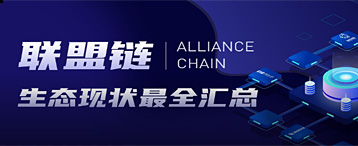-
Why ZK-Rollups Are the Future of Ethereum Scaling: Interview with StarkWare PM Gal Ron
 George Georgiev
George Georgiev 2023-02-07
2023-02-07 4633
4633 Crypto wiki
Crypto wiki
-
Summary:What are ZK-Rollups, and why is everyone talking about them? What’s the future of Ethereum scaling? A deep dive with StarkWare’s Gal Ron.
Expanding Ethereum has been one of the hottest topics in the past months. In September 2022, the transition of the Internet to the equity certification consensus algorithm was a great milestone in this area, because it opened the door for implementing many different amplification solutions.
Although the developers of Ethereum have been trying to expand the Internet in local ways, the killer power of the second-tier solution has just begun to emerge.
The concept of zero knowledge proof is now becoming a reality, but for many people, they are still very strange ideas. In order to help us better understand the future of Ethereum's scale, Gal Ron is the product manager and blockchain researcher of StarkWare, which focuses on this point.
Ethereum problem
Before we fully understand some details, it is important to grasp the specific meaning of expanding Ethereum. In the words of Layman, this is a process to expand the processing capacity of the Internet, so that each node can solve higher transaction management freight volume.
There is a saying that it requires a transmission chain to be only as strong as its weakest link. The main reason is that only one link must be broken, and all transmission chains can be invalid. It also limits the compressive strength of the chain, because it can handle the load only by solving its weakest point, regardless of the compressive strength of all other links.
The same is true for Ethereum in the system state. The importance of this point comes from the fact that Ethereum must comply with the provisions of "trust".
When talking about this, Ron explained:
In order to implement every trust assumption and trust rule, all nodes (in Ethereum) need to do the same thing. According to the definition, this limits the overall freight volume, and if we want to increase the TPS or block size above a certain threshold, we will gradually block the participation of smaller nodes (loading: the calculation level is relatively small).
In essence, this also limits the capacity of Ethereum.
StarkWare's approach: What is ZK verification?
Ron explained that several options can deal with the Ethereum limitation problem. One of them is to create and invent other things.
However, StarkWare implemented a different approach, that is, "expand Ethereum from Ethereum, rather than build another chain". He accomplished this through StarkNet and StarkEx, so let's take a look.
StarkNet is described as "the effectiveness induction of blockchain technology without permission, also known as ZK induction". As the L2 (second layer) system in Ethereum, it is committed to making all decentralized application processes (dApp) complete the calculation of infinite volume. This is also done without giving up the security and composability of the main layer (Ethereum), because StarkNet depends on the data encryption and verification system software called STARK.
There are some things to be lifted, so we should gradually prove the concept from zero knowledge.
"With Ethereum, all nodes must operate all transaction management again. Before ZK (zero knowledge), there was no other way to trust others to fully operate computing. If I were a node on Ethereum, I could see the performance of the content system reported to me by other nodes. I had no way to trust them except to run the same computing they just ran again.
The magic of ZK is that it has created a new way to trust other entity lines without having to run the calculation they just performed. "– Ron said.
In fact, ZK induction like StarkNet has greatly reduced the amount of computing tasks that must be spent by nodes in Ethereum, thus improving the freight volume of the Internet.
All these are completed without giving up the safety factor of the main floor. Therefore, StarkWare created ZK STARK, which allows blockchain technology to transfer computation to a separate off-chain STARK verifier, and then use the on-chain STARK verifier to verify the integrity of such computation.
Gal Ron explained how the Prover and Sequencer work together. For more details about this, please refer to the video above.
We will also learn more about what induction is, what StarkEx is, and what StarkWare plans for the future.
Disclaimer:As an open information publishing platform, shilian only represents the author's personal views and has nothing to do with shilian. If the article, picture, audio or video contains infringement, violation or other inappropriate remarks, please provide relevant materials and send it to: 2785592653@qq.com.
Hint:The information provided on this site does not represent any investment suggestion. Investment is risky, and you must be cautious when entering the market.
ShilianFan group:Provide the latest hot news, airdrop candy, red envelopes and other benefits, WeChat: rtt4322.
















